
Chengdu, capital of China's southwestern Sichuan Province, is renowned as being the home of the panda, plus much more besides. Next year, the city will host the prestigious Fortune Global Forum, acknowledging Chengdu's growing reputation as a major business center. Much of this success can be attributed to the city's fast growth 'can-do' attitude, together with its relaxed lifestyle. It's a combination proving every bit as appealing as Chengdu's cute black and white natives.
Kuanzhai Lane (宽窄巷子) is a fusion of tradition and fashionable, business and leisure in the heart of Chengdu. Its name literally means wide and narrow lanes, and present-day Kuanzhai Lane consists of three lanes: Kuan Lane (宽巷子, literally Wide Lane), Zhai Lane (窄巷子, Narrow Lane) and Jing Lane (井巷子, Well Lane).
Among the elegant architecture and courtyards are distinctive and chic stores and businesses, including restaurants, "private kitchens" (high-end private restaurants), cafes, bars, salons and a wide variety of shops. The combination of business, culture and history makes Kuanzhai Lane not just a retail area, but representative of the city and its spirit in the modern era.
Back in the Qin Dynasty (221-206 BC), Chengdu was divided into two small cities: the Greater City in the east and the Lesser City in the west. Kuanzhai Lane is situated in the latter.
In 1718, the 57th year of the reign of emperor Kangxi of the Qing Dynasty (1644-1911), the government sent soldiers to Tibet to expel invading Dzungars. After the war, more than 1,000 of these soldiers and their families settled in Chengdu permanently, giving the city a substantial boost.
Originally there were 42 alleys in the Lesser City, but only the three comprising Kuanzhai Lane remain today. There you can still see the stones where people used to tie their horses, bearing testimony to the glory days of Kuanzhai Lane.
In 2004, a four-year restoration project began in Kuanzhai Lane, restoring and rebuilding historical relics and architecture. Reopened in 2008, it is now an all-around destination that satisfies visitors' appetites for both delicious food and culture.
Wandering around the labyrinth of lanes, there is much to explore and try. Old-fashioned tea houses and restaurants serving authentic Sichuan and other cuisine stand alongside, modern chic Western-style restaurants, bars and cafes, adding a twist of the 21st century to the ancient gray stonework.
Kuan Lane, also known as Xingren Lane back during the Qing Dynasty, is where visitors can experience the traditional attractions of a typical Chengdu leisure street.
At Zhai Lane, originally called Taiping Lane, the combination of Chinese and Western styles offers diverse and fashionable choices.
Jing Lane, in the past known as Ruyi Lane, was given its current name because of the old well at the western end of the alley. Here you can find traditional Sichuan-style handicrafts, as well as modern bars.
The 400-meter "brick" culture wall documenting 1,000 years of history is also a must-see attraction in Kuanzhai Lane.
Different kinds of cuisines can be found at the classic private kitchens, while tea houses offer not only refreshing drinks but slower-paced leisure missing from modern lifestyles. Visitors can also enjoy traditional Sichuan Opera performances in restaurants and tea houses, including the famous bian lian (变脸, face-changing), a famous element of Sichuan Opera which sees performers change colored masks repeatedly during a performance.

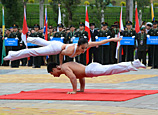

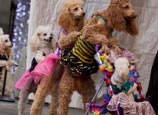
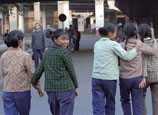

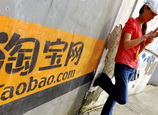
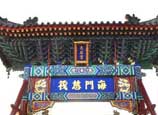









![]()
